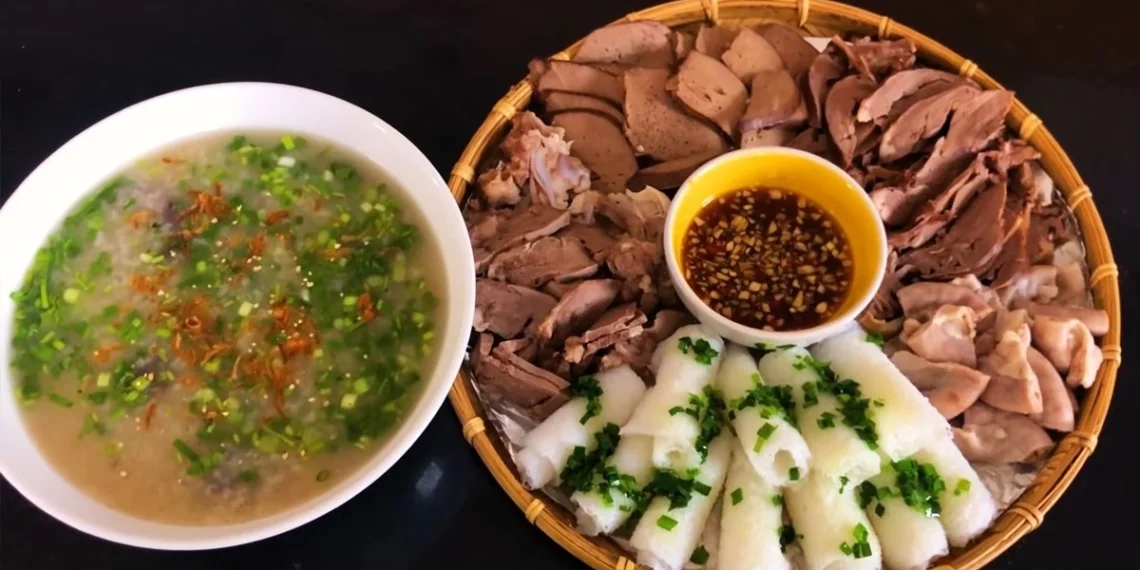-
Preparation
45 minutes
-
Cooking
1 hour 30 minutes
-
Difficulty
Medium
Bánh hỏi cháo lòng specialty of Quy Nhơn is a delicious dish thanks to the harmonious combination of flavorful bánh hỏi and hot lòng cháo, bringing the delicious and unique flavor of the Nẫu people. Let’s go to the kitchen with TasteVN and immediately implement the secret to making this porridge!
Ingredients for Bánh hỏi cháo lòng Quy Nhơn For 4 people
Pork tongue 1 piece Pork heart 1 piece Pork intestine 1 piece (young intestine) Pork liver 1 piece Pork blood 1 bowl Rice 1 bowl (small rice bowl) Bánh hỏi 100 gr Chives a little Cilantro a little Ginger 1 root Red onion 3 bulbs Common spices a little (salt/sugar/seasoning powder/msg) Cooking oil 2.5 tablespoons Fish sauce 1/3 bowl (type of rice bowl) Minced garlic and chili a little
How to choose fresh and delicious ingredients
How to choose fresh pig intestines, pig tongue…
- When buying, choose intestines that have bright, fresh, and shiny colors. The intestines should be firm and have no strange odors.
- For small intestines, choose those that are small, with a firm, round shape, the surface should be pinkish-white, and the liquid inside should be milky white; if the small intestine has a yellowish liquid, it may be bitter and not tasty when cooked.
- For pig organs such as heart, liver, and stomach, choose those that are relatively sized, not too large but also not too small.
- Choose pig liver that is dark red or slightly purple, with a smooth surface, soft and fine to the touch; pressing your finger into it should leave an imprint.
- Fresh pig hearts are usually dark red, with a smooth and soft exterior. When touched, it should have some elasticity. Pressing the heart will release bright pink fluid, with no mucus or foul odor.
See details: How to choose fresh pig intestines
How to choose delicious rice pancakes
- For fresh rice pancakes, you should choose those that are not too bright white to limit the case of sellers using bleaching agents.
- Fresh pancakes have moisture and a light aroma. Do not choose pancakes that have a rancid smell or are moldy due to being stored for too long.
- You can choose pre-made rice pancakes or dry rice pancakes that are widely sold in local markets and supermarkets.
- Additionally, if you have time, why not try making delicious fresh rice pancakes at home using the recipe below!
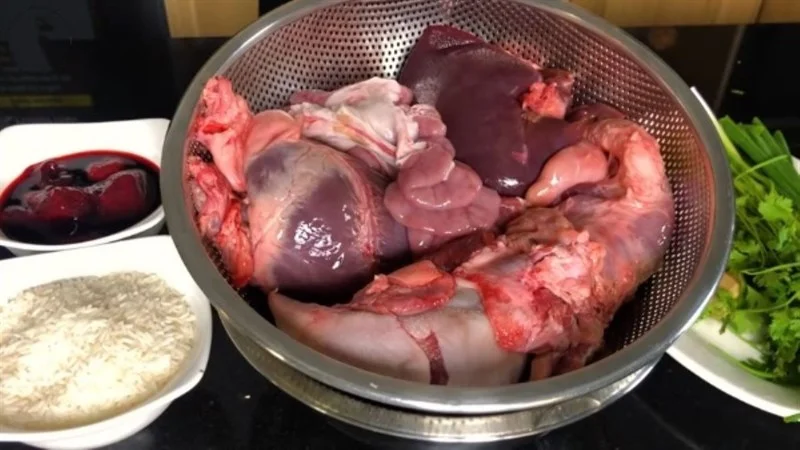
How to make Banh Hoi Chao Long Quy Nhon
-
Sautéing Rice
Wash the rice thoroughly with water to remove dirt.
Add the rice to a pot and mix well with 1/2 tablespoon of cooking oil.
Tip: To ensure the rice grains expand evenly and are more fragrant when boiled, you should marinate the rice with cooking oil for about 15 minutes before cooking.
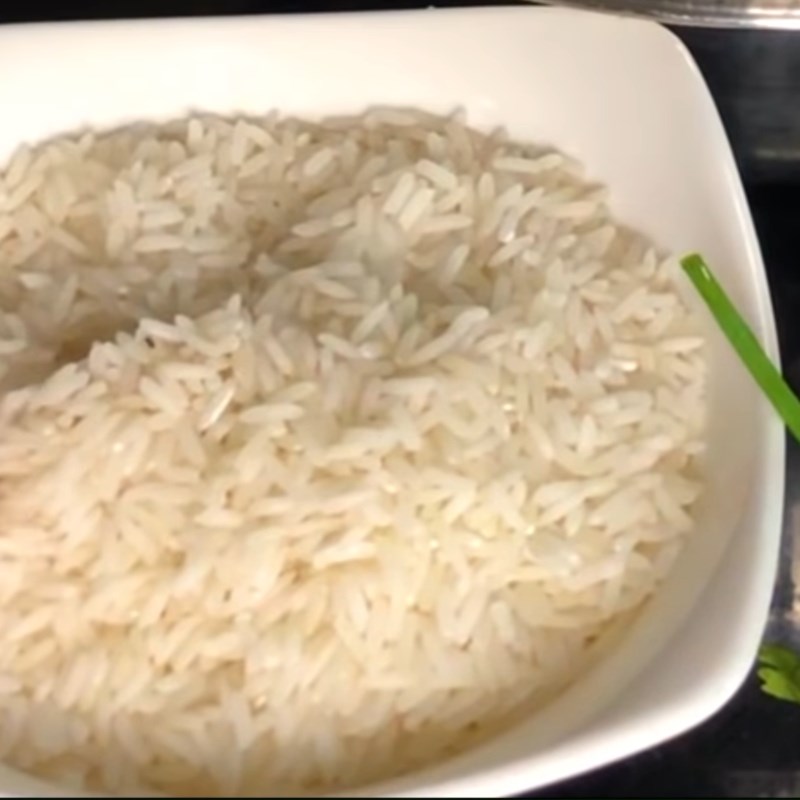
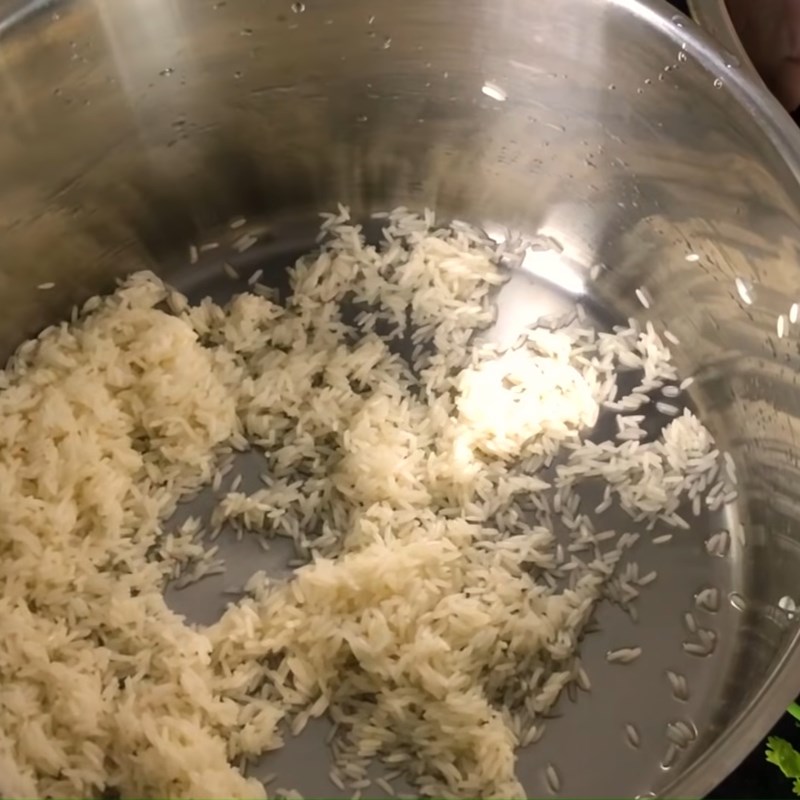
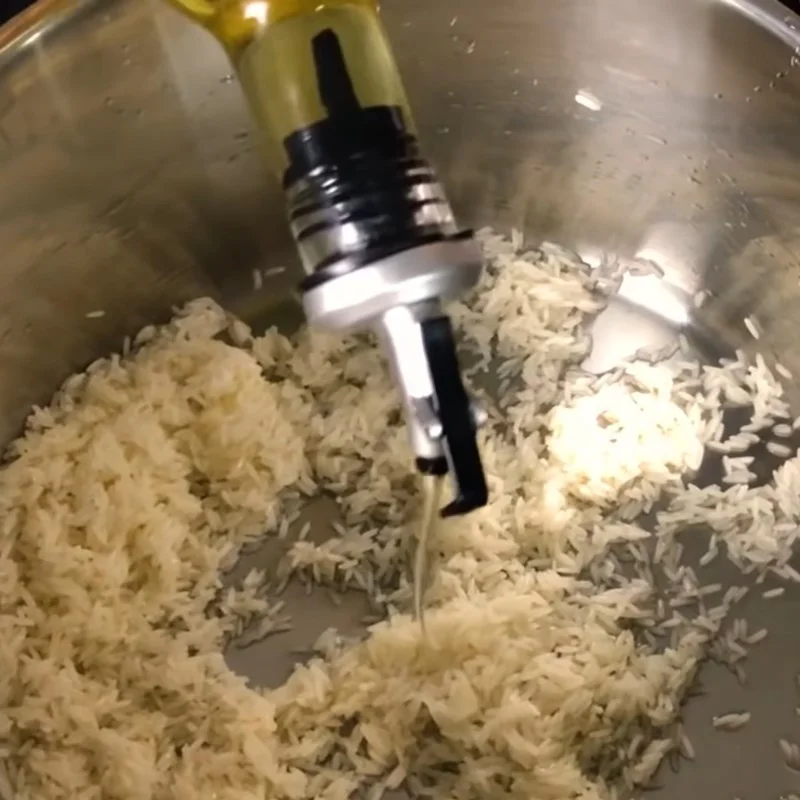
-
Preparing Pig Liver, Heart, and Intestines
Wash the pig liver thoroughly with salted water, then cut the liver into 2 – 3 pieces.
Cut the pig heart in half lengthwise, remove all the coagulated blood inside, and wash it thoroughly.
Remove the white fat from the small intestine. You can turn the inside of the intestine out to wash both the outside and inside, using salt to scrub and then rinse with clean water.
See details: How to prepare clean pig intestines, odor-free
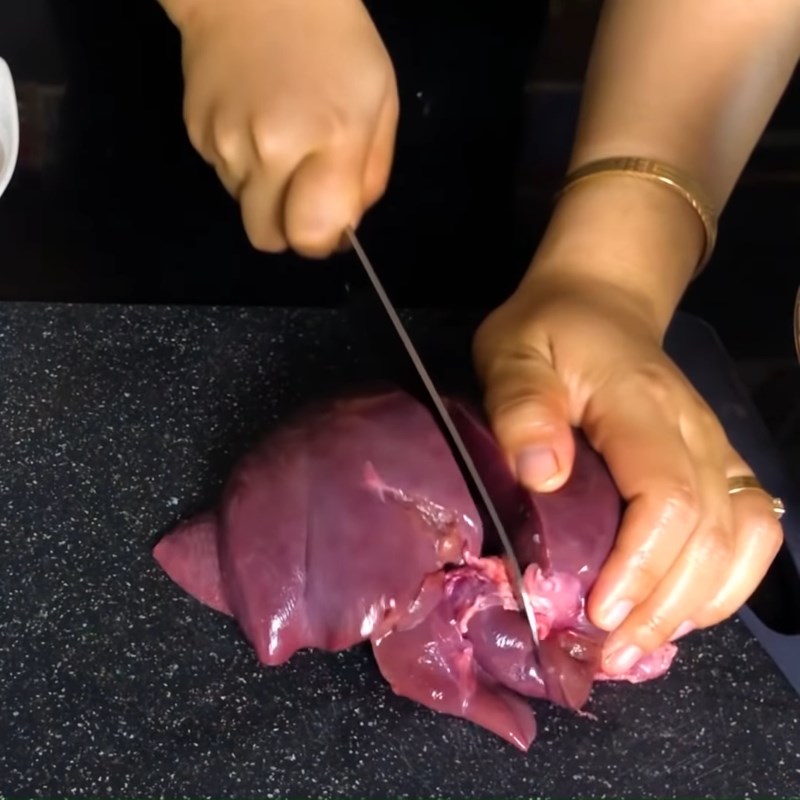
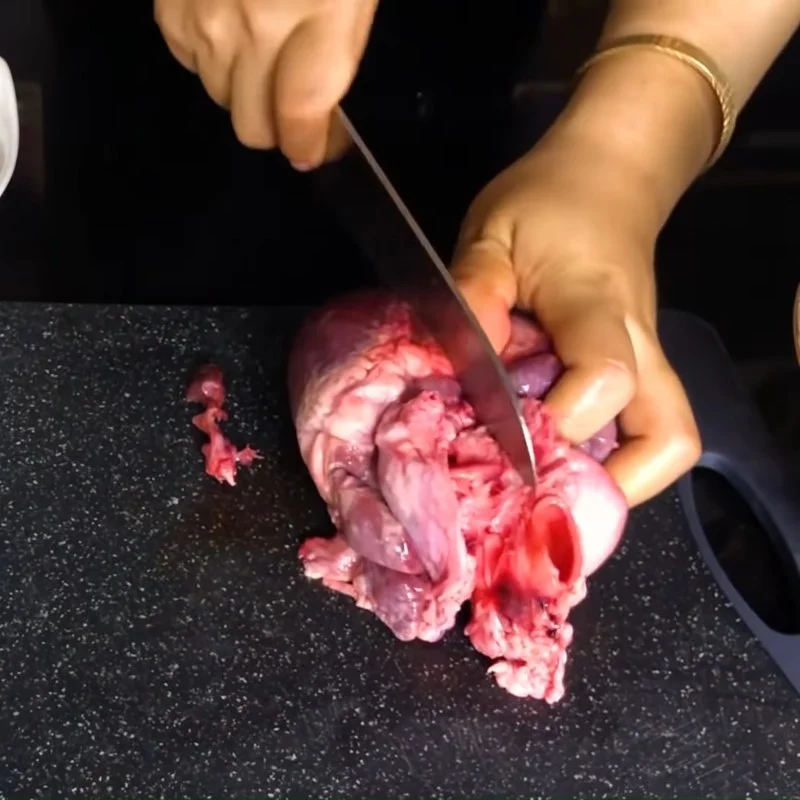
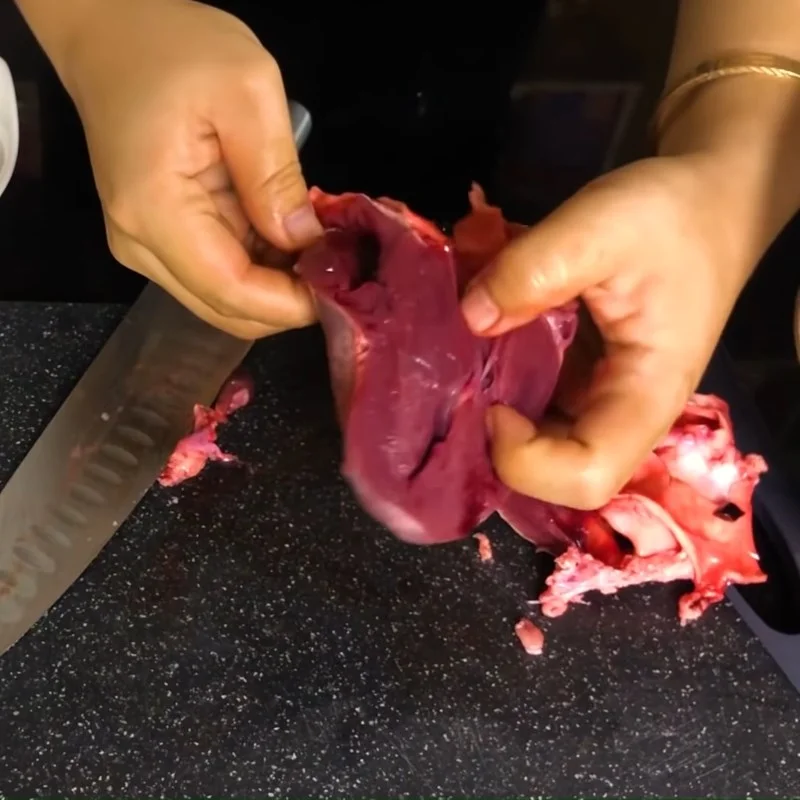
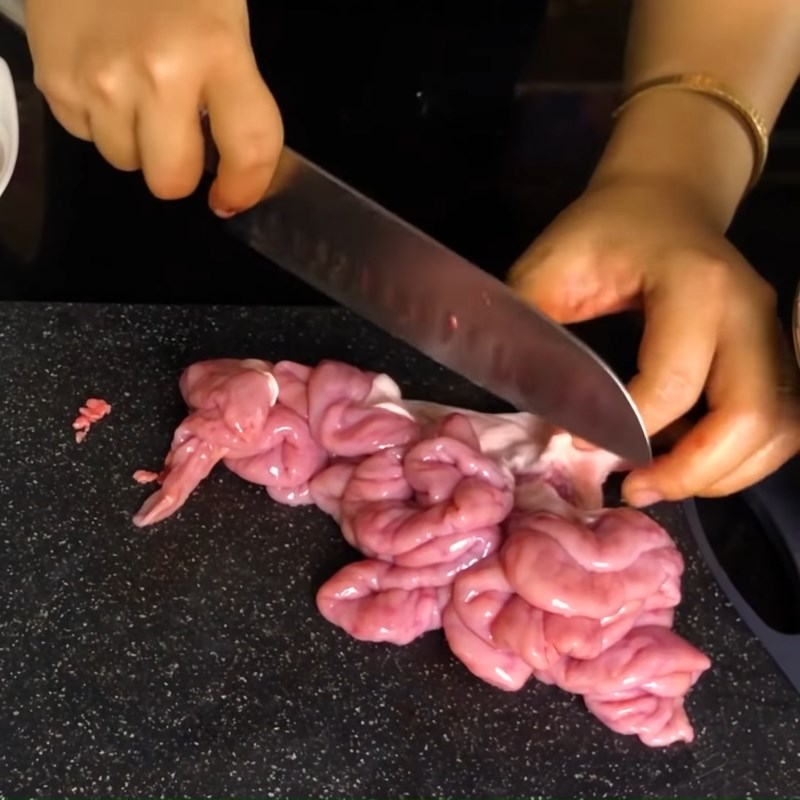
-
Preparing pig tongue
Rinse the pig tongue with cold water, cut off the tip of the tongue.
Split the throat part in half, turn it out and wash the inside of the throat thoroughly.
Blanch the pig tongue in boiling water to firm it up, use a knife to remove the dirty white parts on the surface of the tongue.
Finally, don’t forget to rinse again with clean water.
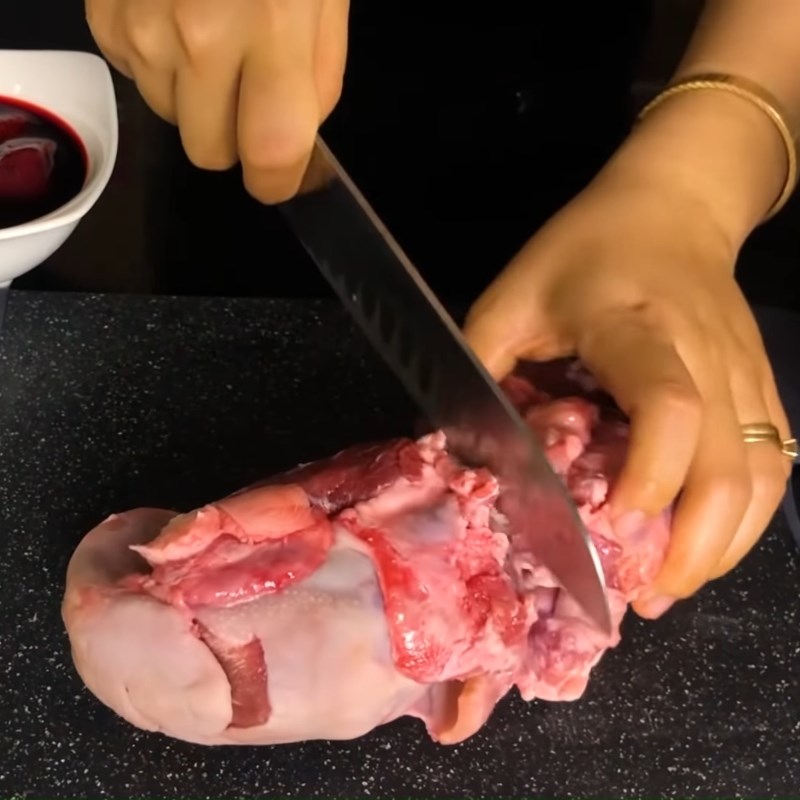
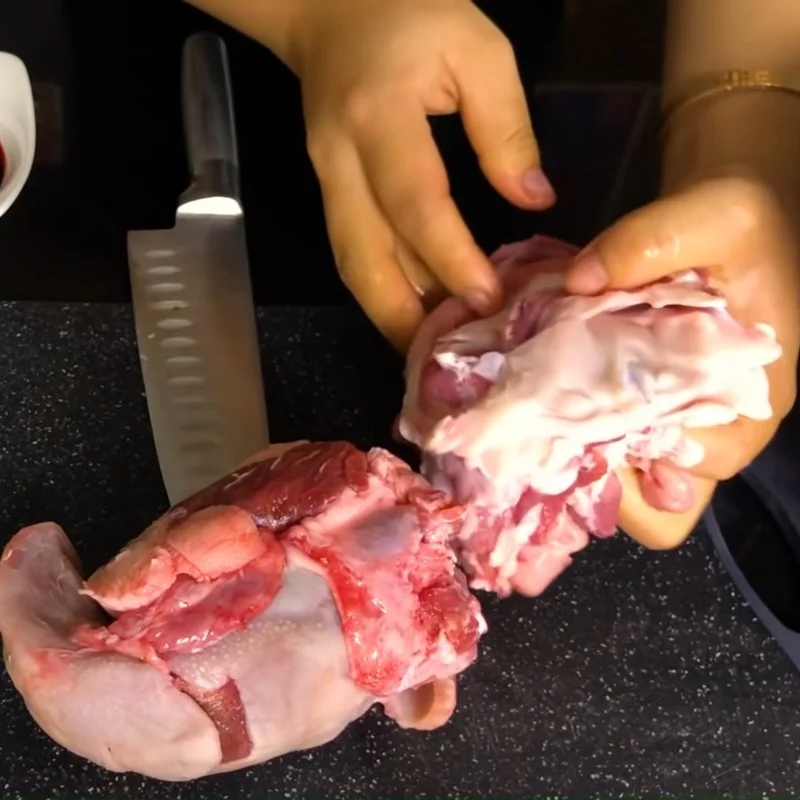
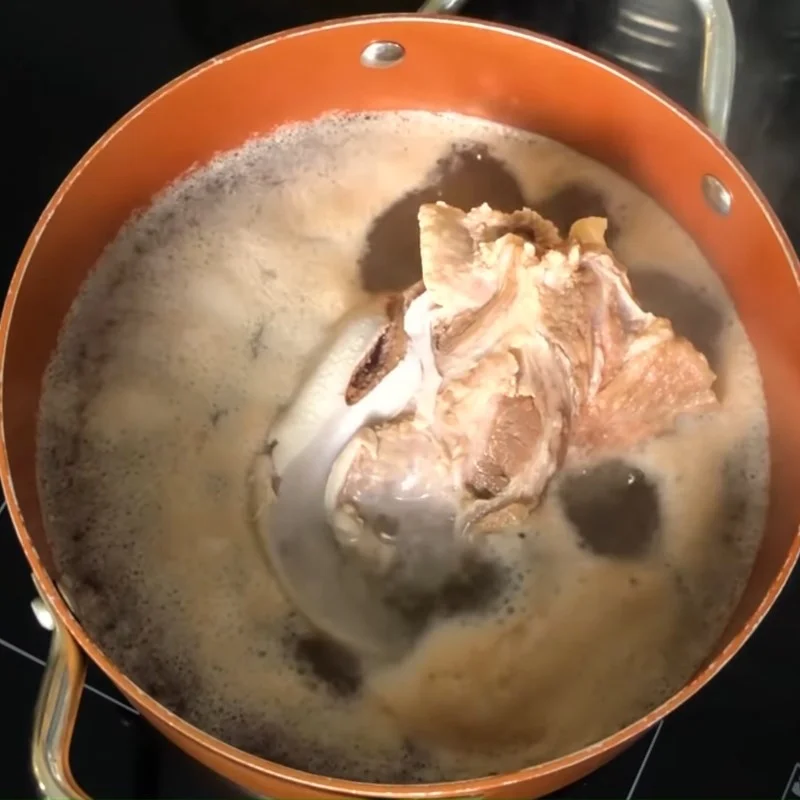
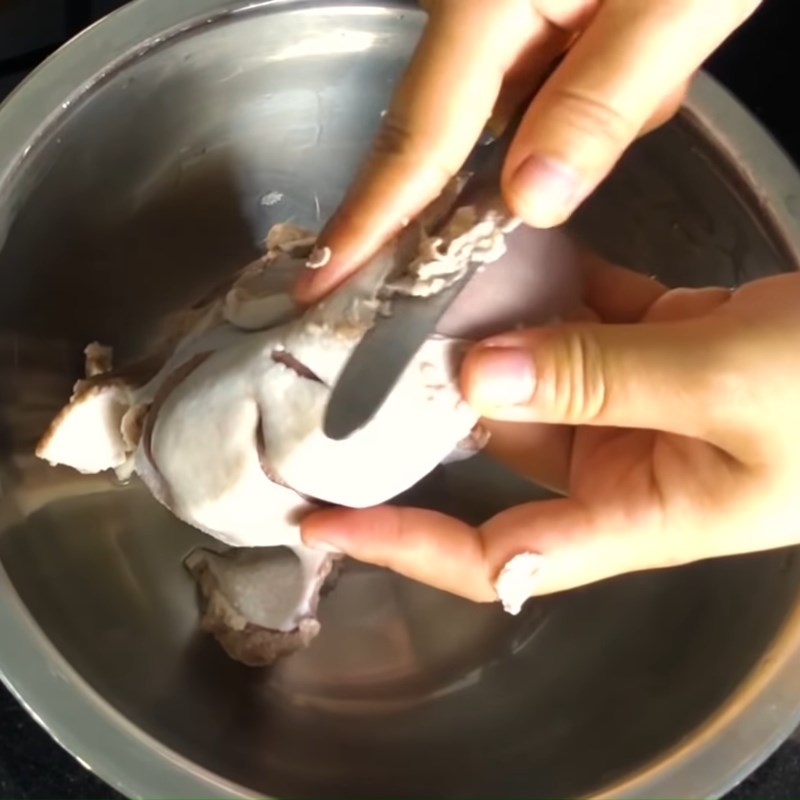
-
Boil pig heart, liver, and blood
Put the pig heart and liver into a pot, add enough water to cover, along with a few slices of ginger and shallots, then add 1/2 teaspoon of salt and a little monosodium glutamate.
Tip:
- To ensure the heart is cooked just right and the liver does not dry out, boil the heart and liver for about 15 – 17 minutes (depending on size).
- To check if they are done, poke the heart and liver with the tip of a chopstick; if no red blood flows out, they are cooked.
Remove the cooked heart and liver to a bowl of cold water.
Divide the coagulated blood into bite-sized pieces, drop them into the pot of water where the heart and liver were boiled to cook. When the blood is cooked and floats to the surface, remove it.
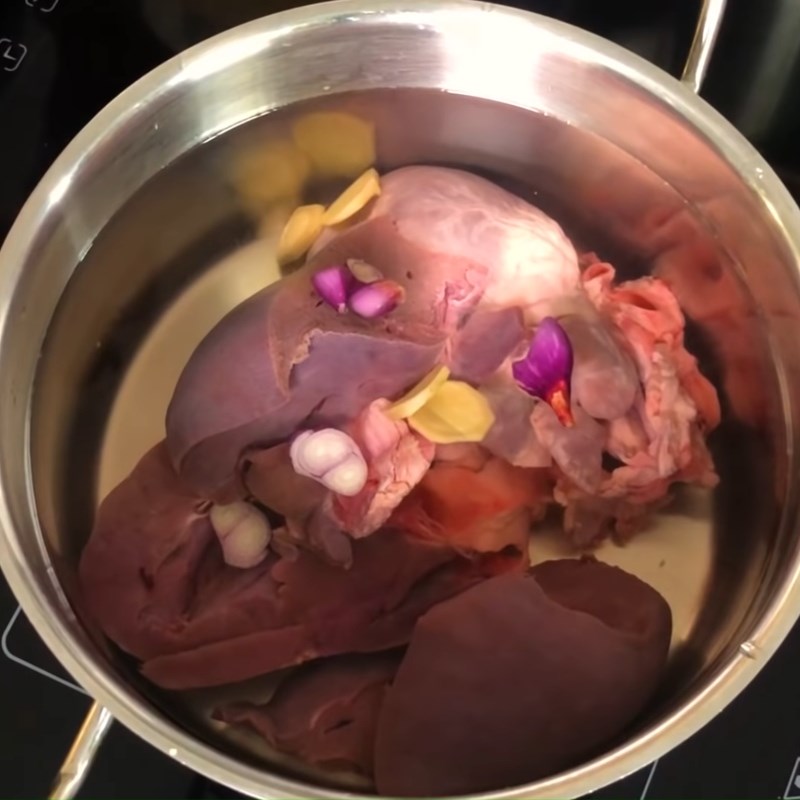
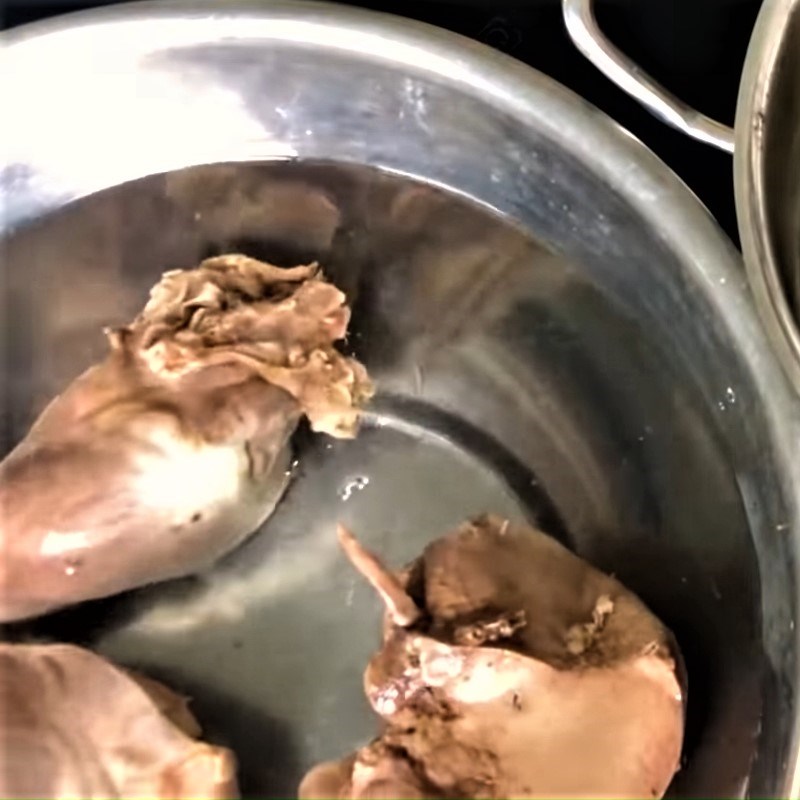
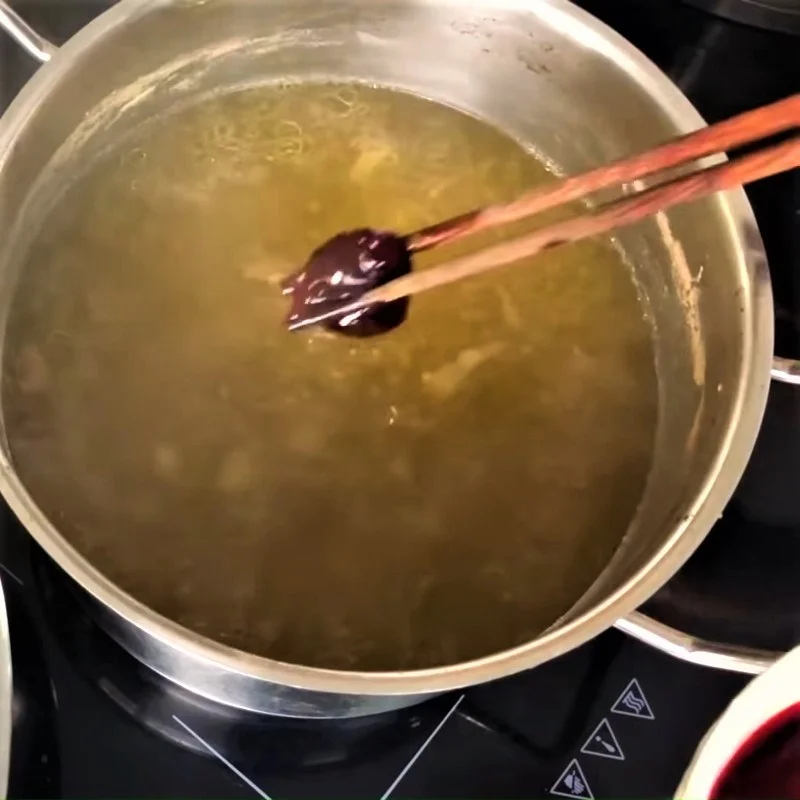
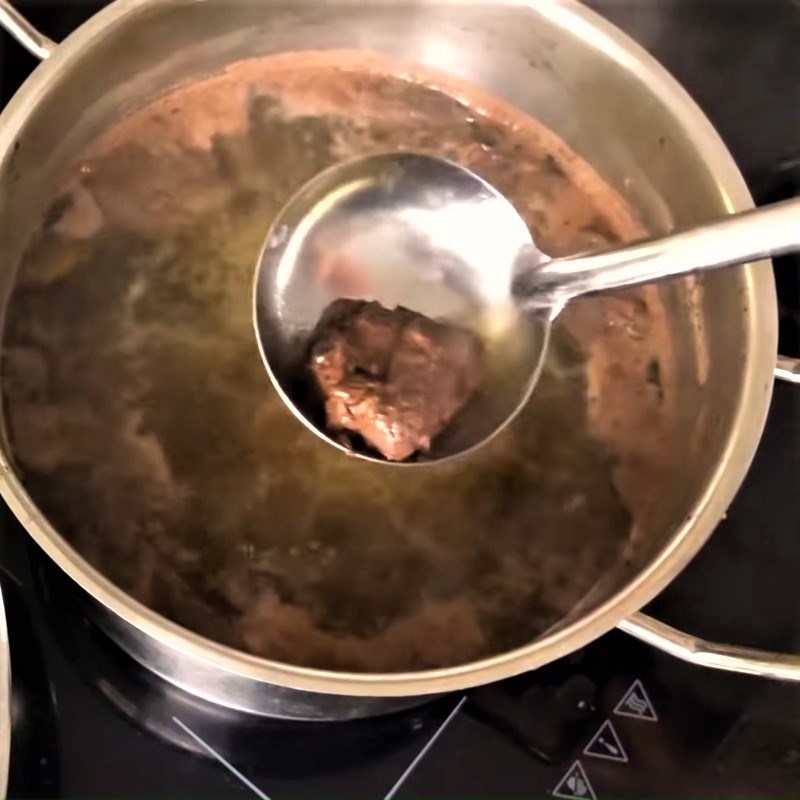
-
Cook the porridge
Add 2 liters of water to the rice that has been soaked in oil, and simmer the rice.
When the water boils, add the cleaned pig tongue and throat to simmer together.
Use a sieve to strain the water from boiling the heart, liver, and blood, then add this to the pot of porridge.
Tip: The broth from boiling the heart and liver will have a sweet and rich flavor, with many nutrients. Additionally, using it to cook the blood will give a natural blood color, making the porridge more visually appealing.
Cook the porridge until the rice grains expand, then remove the tongue and throat of the pig into a bowl of cold water.
Season the porridge pot with 1 tablespoon of seasoning, 1/2 teaspoon of salt, and 1/3 teaspoon of monosodium glutamate. Don’t forget to taste and adjust to your family’s preference.
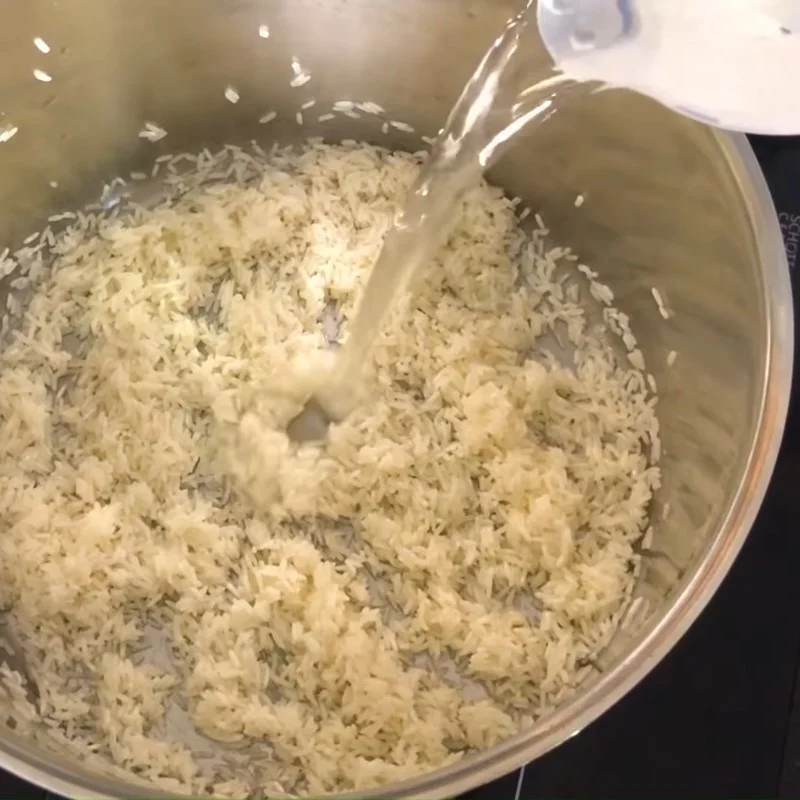
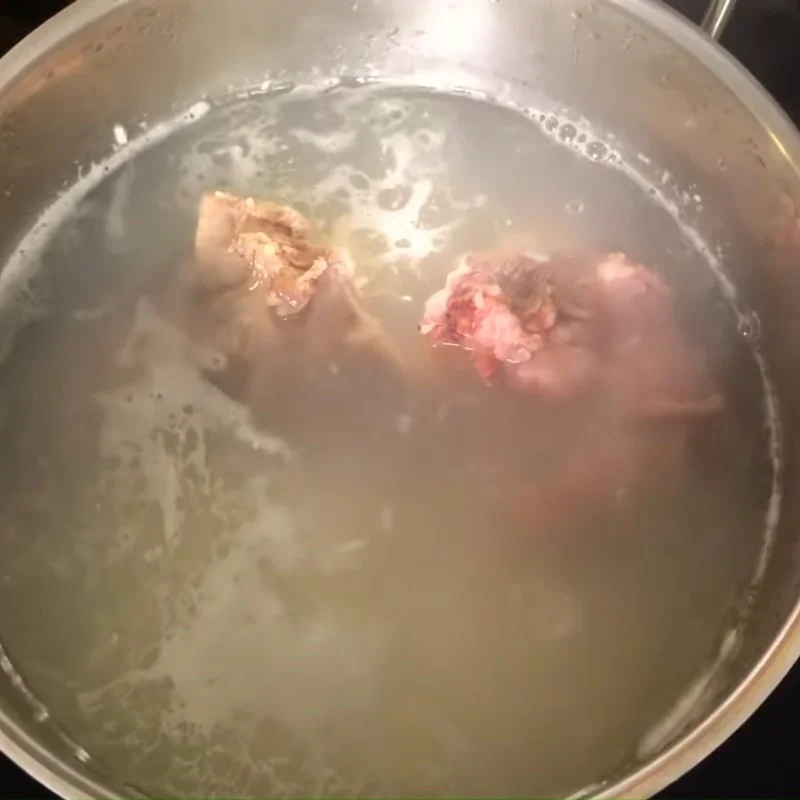
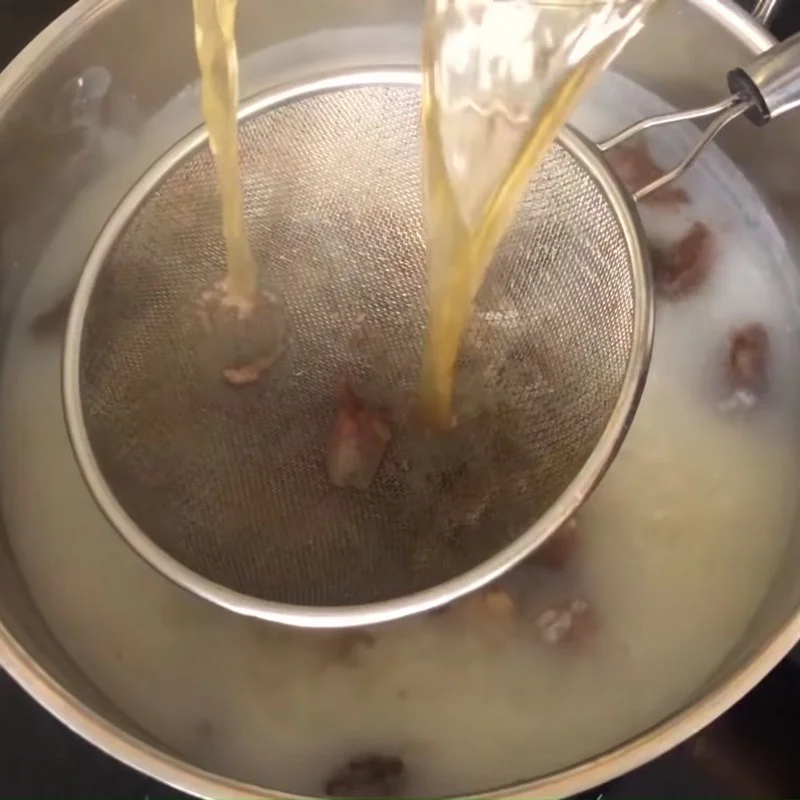
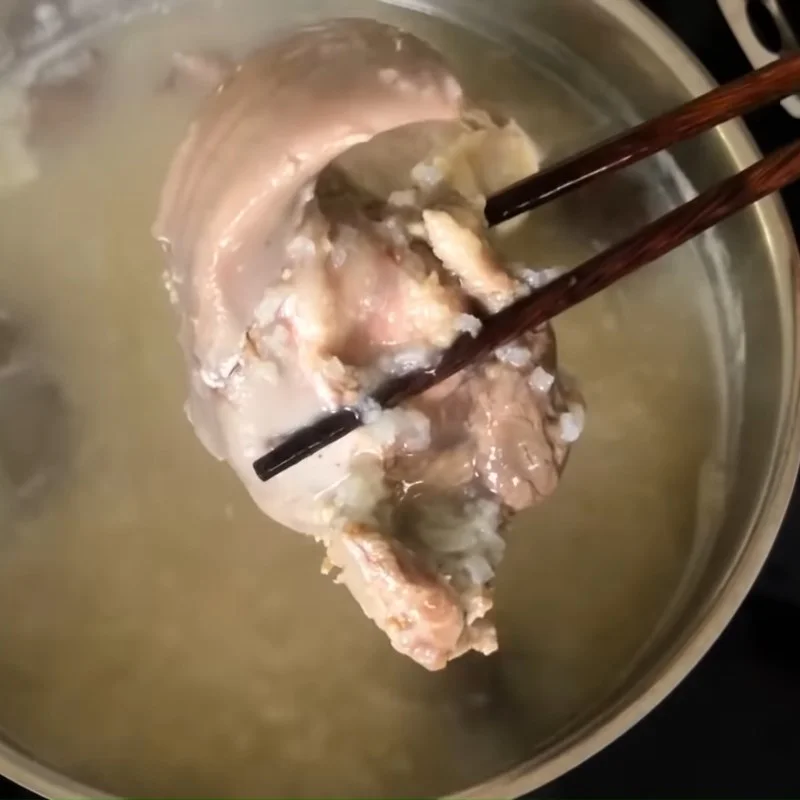
-
Boil the pig intestines
Put the cleaned pig intestines, with the odor removed, into a pot filled with water along with a few slices of ginger, shallots, and a bit of salt and monosodium glutamate.
When the water is boiling vigorously, boil the intestines for an additional 3 – 5 minutes (depending on the thickness and size of the intestines), then remove and let cool.
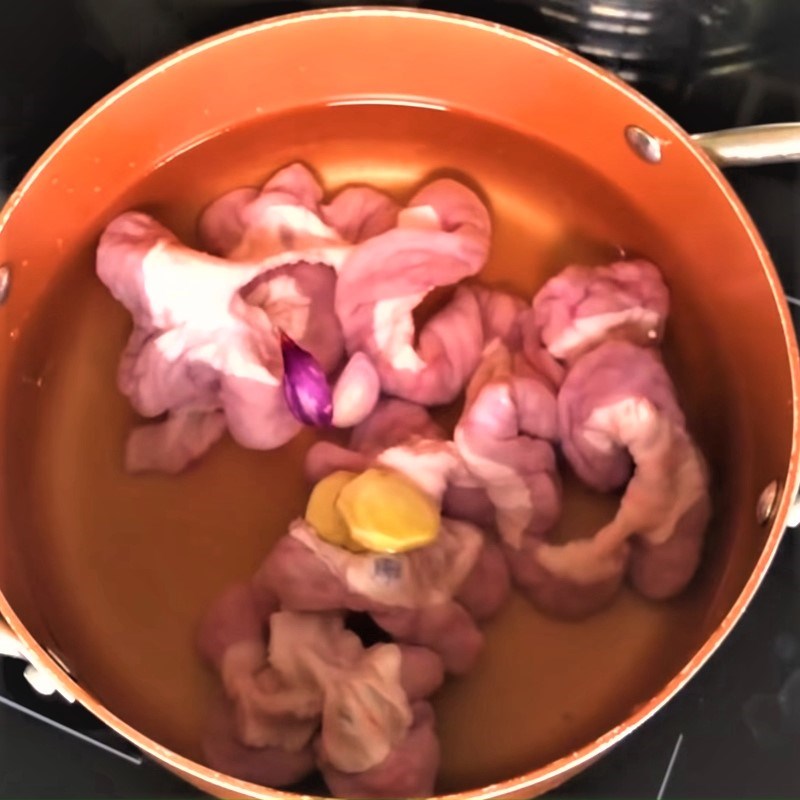
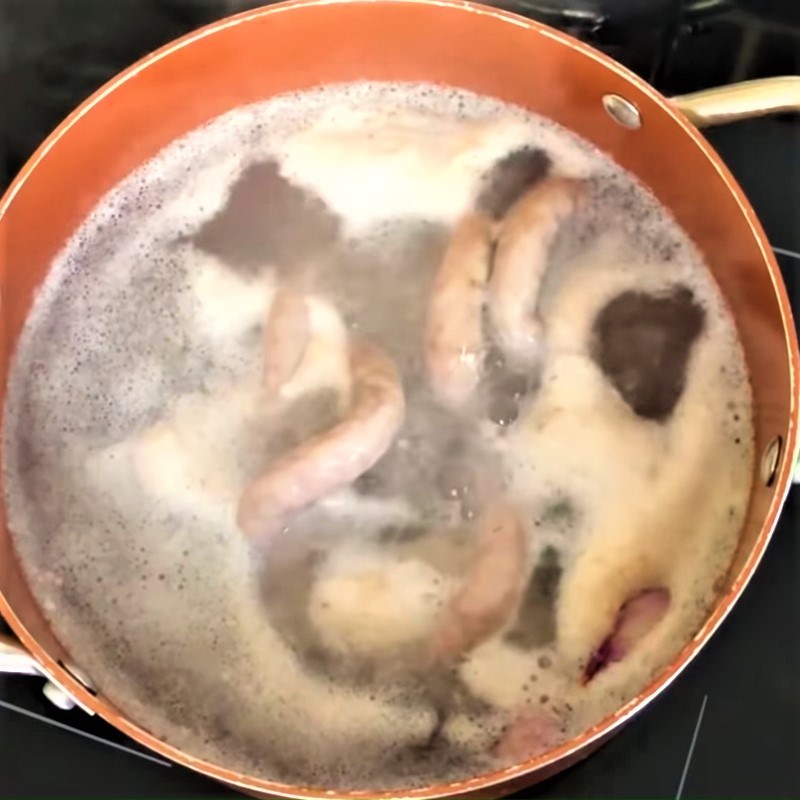
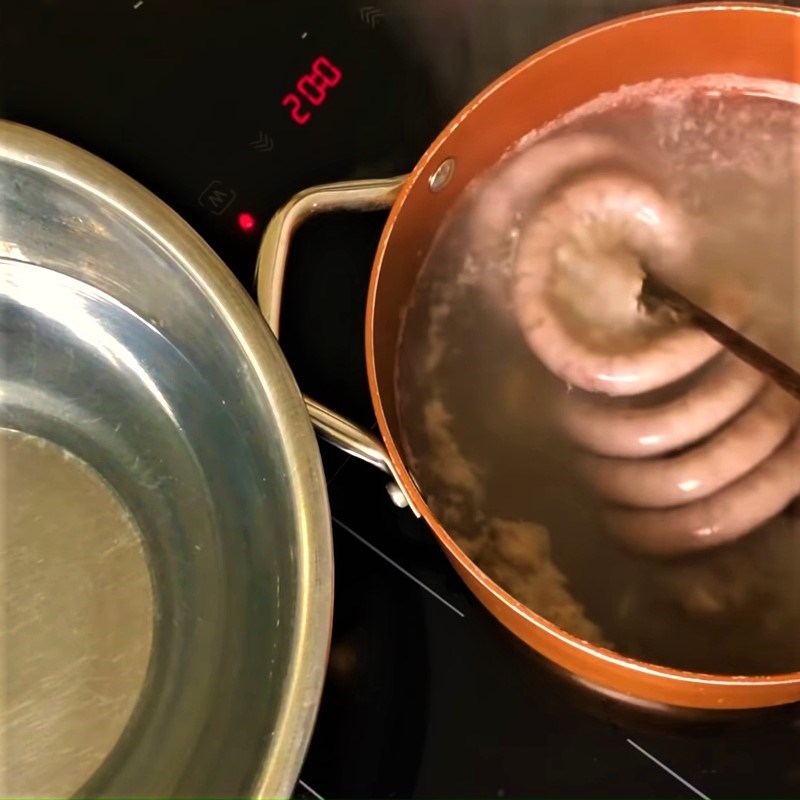
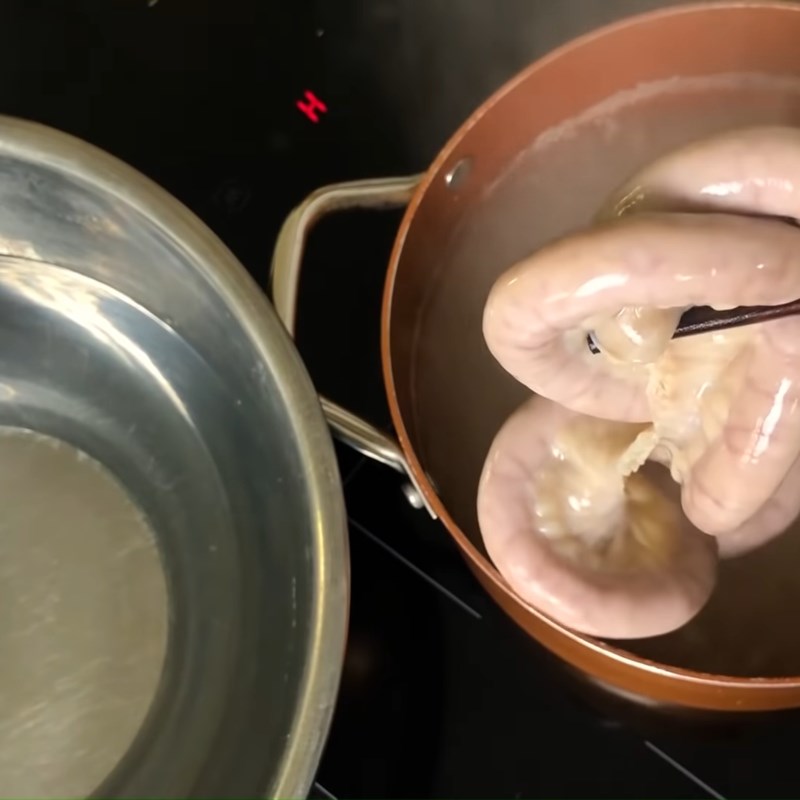
-
Making scallion oil and preparing bánh hỏi
Trim the roots of the scallions, take the leaves and chop them finely, then place them in a ceramic bowl (adjust according to the amount of bánh hỏi).
Heat about 2 tablespoons of cooking oil (depending on the amount of scallions), and pour the hot oil directly into the scallion bowl.
Cut the bánh hỏi into rectangular pieces that are easy to eat, roll them up for a nice presentation, and arrange the bánh hỏi on a plate.
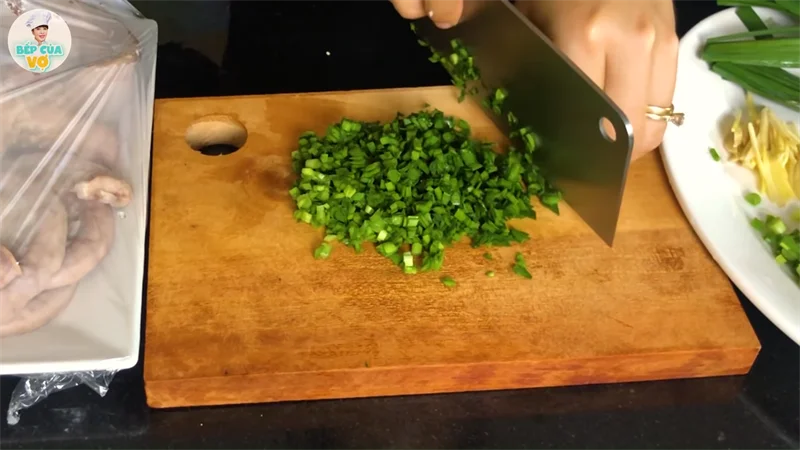
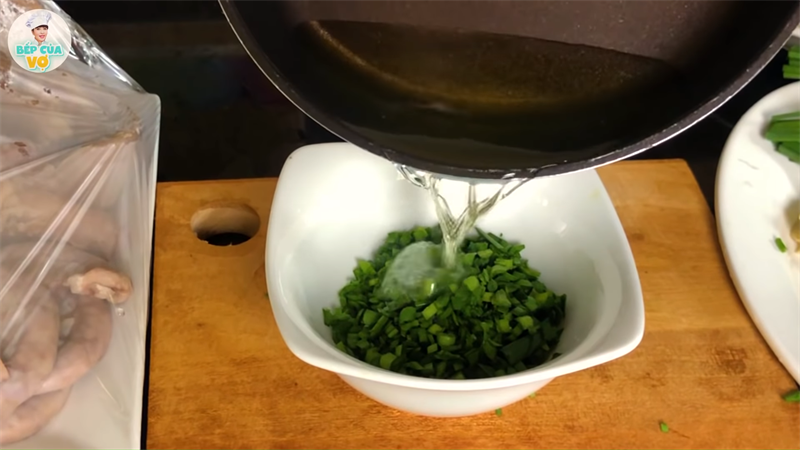
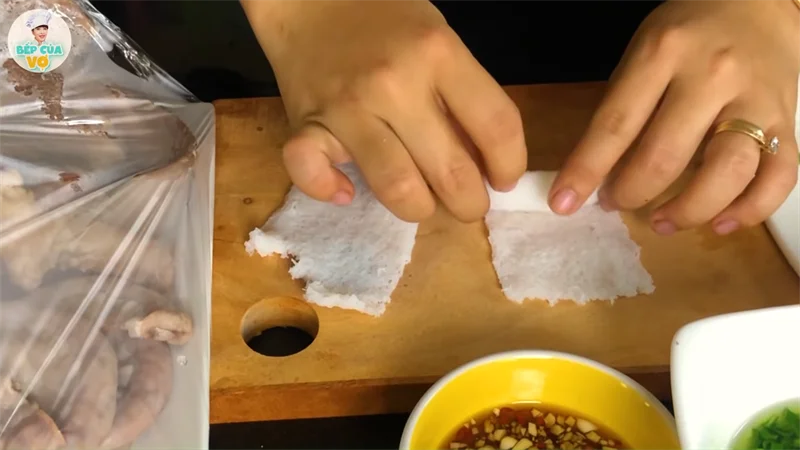
-
Mixing dipping sauce for bánh hỏi with pork entrails
Add 3 tablespoons of sugar, 3 teaspoons of chili sauce, and 2 tablespoons of vinegar into a pot, while stirring continuously, then add 1/3 cup of fish sauce along with minced garlic and chili.
Cook the mixture on low heat for 3 minutes.
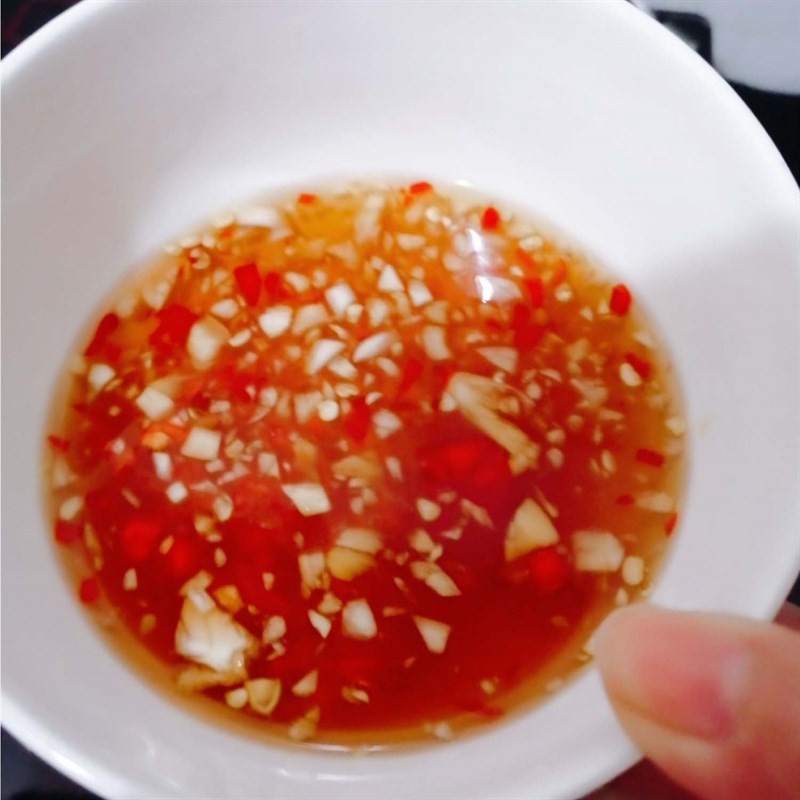
-
Completion
The heart, liver, tongue, and throat should be sliced thinly. The pig’s intestines should be cut into small, bite-sized pieces.
Arrange the pig’s intestines on a tray or plate in an aesthetically pleasing manner. Scoop the porridge into a bowl and add a bit of chopped scallions and cilantro on top. Then spread the scallion oil on the rolled rice vermicelli pieces that are ready to eat to complete the dish.
Tip:
- You can add some fried onions and pepper to the porridge to enhance its flavor.
- To prevent the rice vermicelli from absorbing oil, only spread the scallion oil on the noodles when you’re about to serve, and don’t do it too early.
- If there are any boiled intestines left unused, wait to cut them into small pieces, and wrap them in plastic wrap to ensure hygiene and flavor.
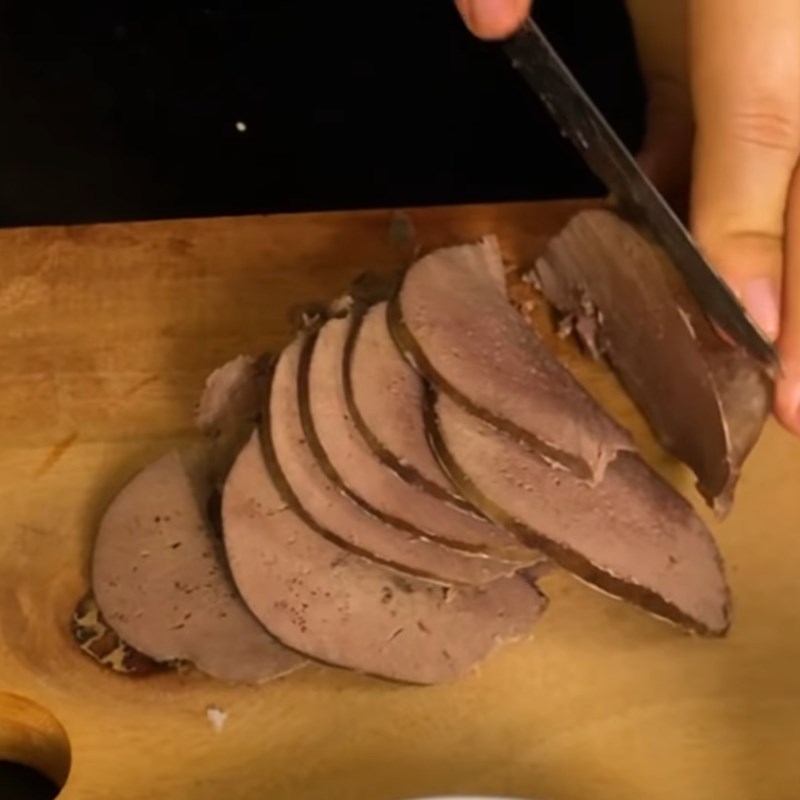


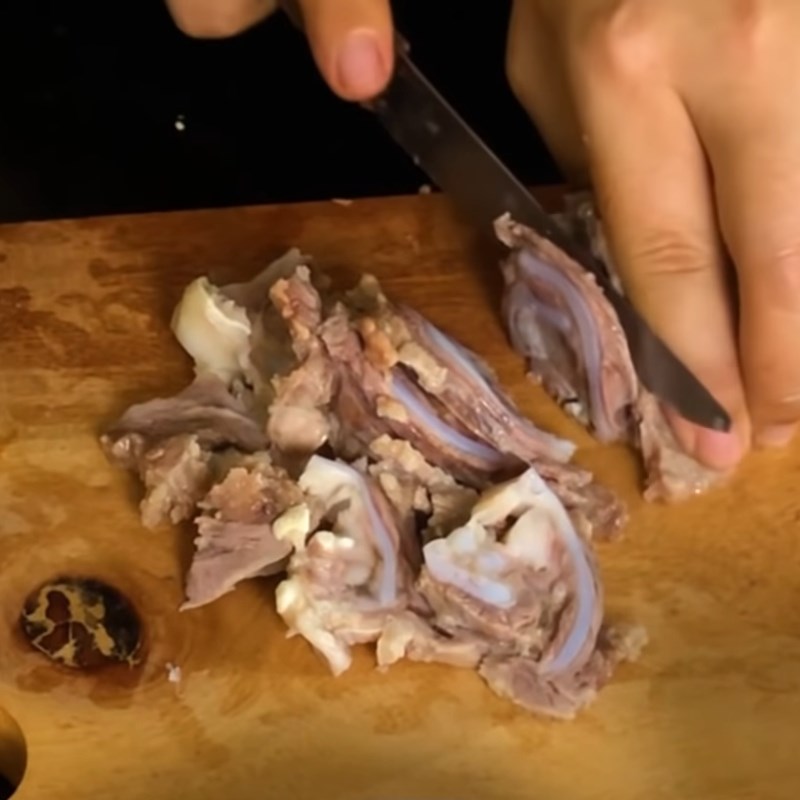
-
Final Product
The plate of rice noodle dish with pig’s offal served includes a dish of finely chopped offal, a bowl of steaming hot porridge sprinkled with a bit of pepper, a plate of rice noodles, and fish sauce.
You will be enchanted by the sweet and sour taste of the fish sauce seeping into each strand of rice noodle, lightly fragrant with chive oil, refreshing. The plate of offal served with the noodles must include heart and liver, boiled just right, not too dry, along with crispy and chewy pig’s intestines and tongue.
The porridge is usually cooked with blood simmered in the cooking water, making it sweet yet light and fragrant. You can enjoy both simultaneously or after finishing the rice noodles, sip the hot porridge. Let’s enjoy rice noodle dish with pig’s offal from Quy Nhon with family!
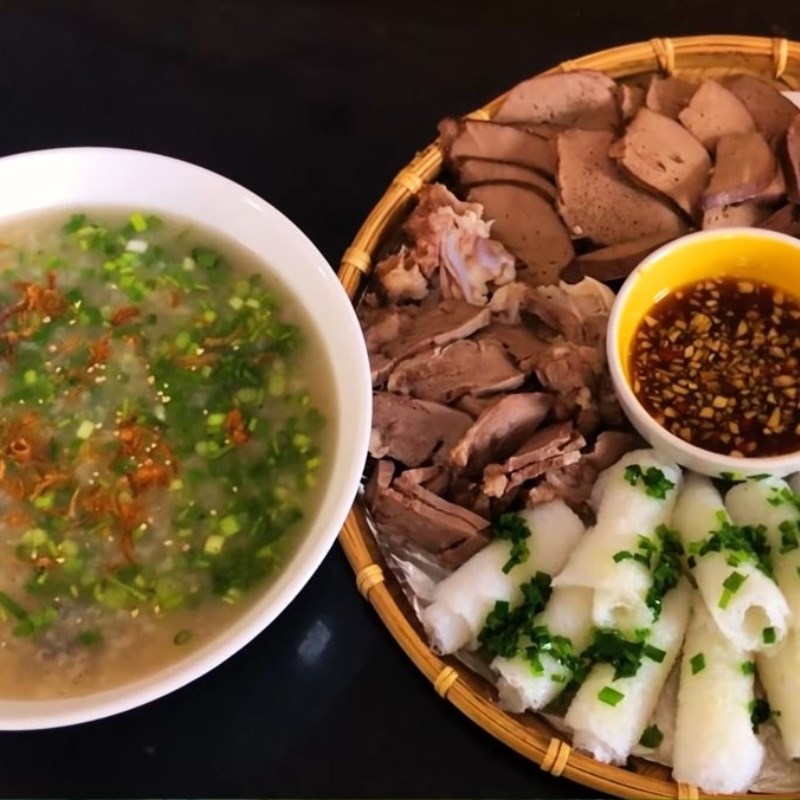
How to Preserve the Dish
- The porridge and offal that you do not finish can be stored in the refrigerator, and when needed, bring them out to reheat.
- Avoid leaving the porridge out in the air for too long, especially on hot days, as it can spoil easily.
- Uncooked pig’s offal should be wrapped in cling film as it easily attracts flies.
- If stored in the refrigerator, you should only keep it for a maximum of 2 days; do not exceed this as the dish will spoil and develop toxins harmful to health.
See more
Above is the article guiding how to make how to make Quy Nhơn rice cakes with pork intestines with authentic flavor, delicious, rich, and extremely simple and easy to execute that anyone can do. Wishing you success with this Quy Nhơn rice cakes with pork intestines recipe!
*Images and recipe reference from the YouTube channel Bếp Của Vợ
